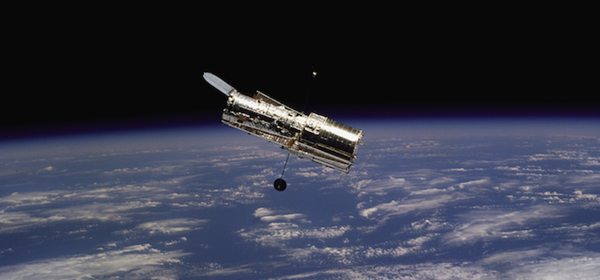The James Webb Space Telescope (JWST) is currently scheduled to launch March 30, 2021, and won’t begin observing right away, as it requires time to reach its final orbit, unfold its sunshield and mirror, and undergo instrument cooling and testing. So these two telescopes may have only limited overlap, if any, should NASA decide to cease operating HST after 2021.
Regardless, the two telescopes are complementary, not competing. HST has limited capabilities at near-infrared wavelengths, from 0.8 to 2.5 micrometers. JWST will observe from 0.6 to 28 micrometers, covering much more of the infrared universe than Hubble. But HST’s optimal wavelength range is from 0.1 to 0.8 micrometer — the ultraviolet (UV) and optical range of the spectrum. This is important because Earth’s atmosphere blocks most UV light, meaning Hubble can observe at wavelengths that we can’t see from Earth and won’t be covered by JWST.
HST will eventually experience enough atmospheric drag from its low orbit that it will crash to Earth; this is projected to occur by the mid-2030s. NASA plans to use a rocket to perform a controlled de-orbit, which will ensure any debris that doesn’t burn up will land in an uninhabited area when HST’s mission is finally complete.
When will that be? According to the European Space Agency’s HST website, www.spacetelescope.org, “As such, there is no set date for Hubble’s retirement. Hubble will continue to work for as long as its components operate and it provides a good service to the scientific community.”
Alison Klesman
Associate Editor










